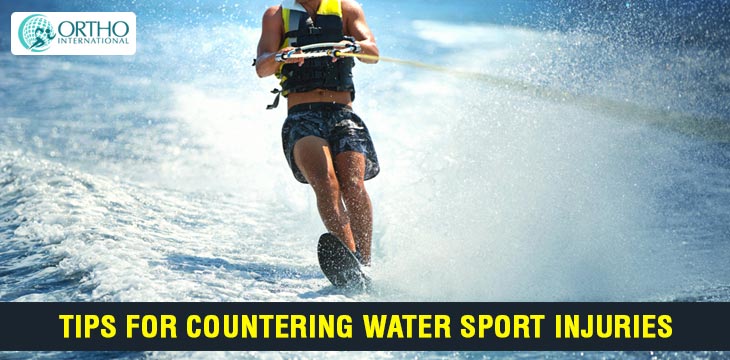During peak summertime in water lying areas, many individuals are seen flocking to lakes and rivers to fancy water sports, like waterskiing, tubing, and wakeboarding. A current study reveals that overall, water sports injuries have a similar in-hospital death rate as motor vehicle accidents. And, water sport lesions are more inclined to succeed in understanding trauma and more likely to want surgical intervention.
Another study revealed that tubing, a harmless action that requires someone in an inflatable tube being pulled by a motorboat, can be just as critical as other water sports like water skiing and wakeboarding.
About Wake Board Water Sports Injuries
Wakeboarding allows the three in one thrill of water skiing, snowboarding, and surfing. It is a cover water sport, where the rider floats over the water body on a wakeboard, which will be dragged after a motorboat at a speed of 30-40 km/h depending on various circumstances such as the board size, the bodyweight of the rider, speed and the type of exercises that the rider plans to carry out.
Wakeboarding Injuries include tubing related injuries most often impact the head and neck, while waterskiing injuries create strain or sprain to the knees, shoulders, and ankles joint. High-speed sports such as jet skiing, surfing, and kiteboarding have the potential to impact with a board and can cause injuries and fractures
Wakeboarders are also seen damaging their head and neck, including sustaining a collision. A wakeboarder can be seen catching an edge, propelling him hard into the water, and thumping his head. Anterior cruciate ligament injuries (ACL) and ankle strains are very common in wakeboarding.
The most popular waterskiing injuries include hamstring strains, ankle sprains, ankle fractures, osteochondral lesions of the talus, and Achilles tendon tears. The skier’s joints are bound to the skis, so the result of a fall can put a lot of pressure on the ankle as the skis go in one way and the skier’s body the other direction.
Who Gets Injured?
Analysis has demonstrated that damages are not significantly related to incompetence. Investigations have revealed that musculoskeletal injuries from water games don’t just happen in our amateur state but even seasoned and expert competitors bear similar injuries.
How To Remain Prevented From Water Sports Injuries?
To stay away from water sports injuries here are some tips for water sports lovers.
- Stay hydrated: The musculoskeletal system, particularly the muscles, work best when they are hydrated. Dehydration springs to muscle cramping, strains or tears. For dynamic water sport activity, a mixture of water and electrolyte drinks is most helpful.
- Stretch: Treat water sports alike any different and warm up before practicing the plunge. Straining improves the range of motion and limits injury and muscle stretches. This is particularly important given the high prevalence of hamstring strains.
- Water Safety: Use a life jacket whenever you’re on or in the sea, lake or river. Even the best swimmers and athletes can grow fatigued. Generally, most people know that a life jacket is needed when riding in a boat or on a jet ski, but to ensure safety factors administration suggest that stand up paddleboard riders now need life jackets.
Reference
If you are passionate surfer still never know when you end up with a water sports injury. But you need not to worry because at Ortho International we provide the best Sports Injury Treatment in Delhi.
